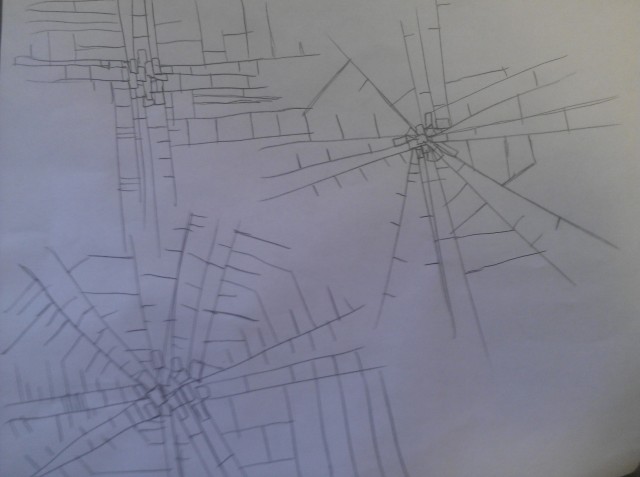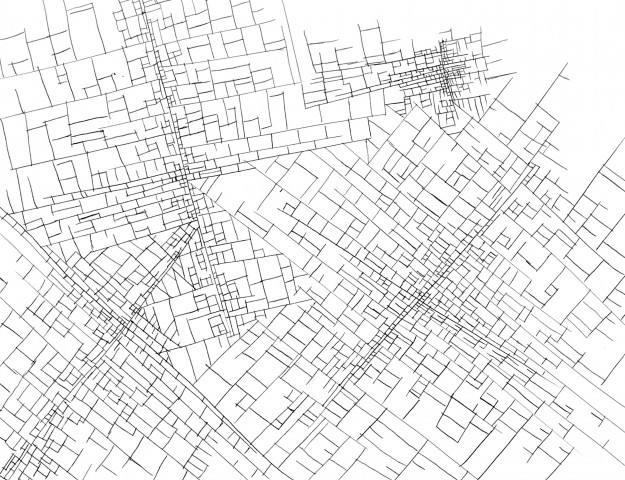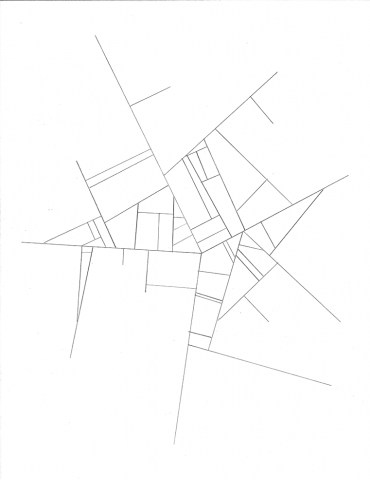Drawing in Reverse
Draw a straight line from the edge of the paper to a point within without reaching the edge of the paper. Draw a line perpendicular to the first, beginning at a point on the first line that is the length of your right thumbnail inwards along the line. From the end of this line draw a line parallel to the first, stopping at the end of the first line. Draw a line perpendicular to connect the lines. Draw lines partitioning the form into thirds. Draw lines partitioning those thirds into thirds. Draw partitions in the final three thirds, dividing those spaces into thirds. Repeat as space allows. Repeat these actions three times.






